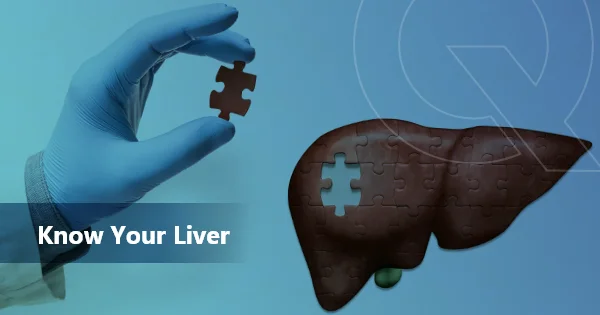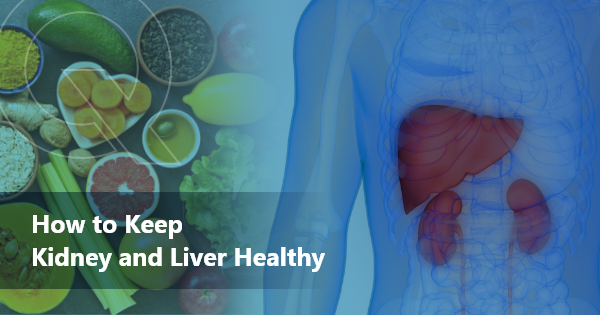Contents
Overview
Did you know that the liver performs over 500 functions? At about 3 pounds (the weight of a football), the liver is one of the largest organs in the body. It is located in the upper right-hand part of the abdomen and behind the lower ribs.
The liver performs many essential, life-sustaining functions, including removing waste products and foreign substances from the bloodstream, regulating blood sugar levels, and creating essential nutrients.
The liver is an incredible organ that can repair and even regenerate itself. As a result, damage from liver disease can often be reversed with a well-managed treatment plan. Therefore, early diagnosis of liver disease is critical.
What does the liver do?
Here are some of its most essential functions:
- Albumin Production: Albumin is a protein that keeps fluids in the bloodstream from leaking into the surrounding tissue. It also carries hormones, vitamins, and enzymes through the body.
- Bile Production: Bile is a fluid that is critical to the digestion and absorption of fats in the small intestine.
- Filters Blood: All the blood leaving the stomach and intestines passes through the liver, removing toxins, byproducts, and other harmful substances.
- Regulates Amino Acids: The production of proteins depends on amino acids. The liver makes sure amino acid levels in the bloodstream remain healthy.
- Regulates Blood Clotting: Blood clotting coagulants are created using vitamin K, which can only be absorbed with the help of bile, a fluid the liver produces.
- Resists Infections: As part of the filtering process, the liver removes bacteria from the bloodstream.
- Stores Vitamins and Minerals: The liver stores significant amounts of vitamins A, D, E, K, and B12, as well as iron and copper.
- Processes Glucose: The liver removes excess glucose (sugar) from the bloodstream and stores glycogen. As needed, it can convert glycogen back into glucose.
What are the symptoms of Liver Disease?
Many people with liver disease do not look or feel sick even though there is damage to their liver.
In acute liver disease, the most common signs and symptoms include:
- Yellow skin and eyes (Jaundice),
- Dark urine
- Pale stool colour
- Loss of appetite
- Nausea
- Vomiting
- Diarrhoea
- Abdominal pain and swelling
- Unexplained weight loss or gain
- Itchy Skin
Are you at risk of Liver Disease?
Factors that may increase the risk of liver disease include:
- Heavy alcohol use
- Injecting drugs using shared needles
- Tattoos or body piercings
- Exposure to certain chemicals or toxins
- Diabetes
- Obesity
Types of Liver Disease
Did you know?
There are more than 100 different types of liver disease:
- Diseases caused by viruses, such as hepatitis A, hepatitis B, and hepatitis C
- Diseases caused by drugs, poisons, or too much alcohol. Examples include fatty liver disease and cirrhosis.
- Liver cancer
- Inherited diseases, such as hemochromatosis and Wilson’s disease.
Hepatitis
Hepatitis is an inflammation of the liver which various reasons like infections or viruses can cause. There are different types of hepatitis as:
- Hepatitis A: Poor sanitation and not washing hands is considered one of the main reasons for the spread of hepatitis A.
- Hepatitis B and C spread through infected body fluids, especially with contaminated needles or unprotected sex.
- Hepatitis D: It can only infect people already infected with hepatitis B.
- Hepatitis E: This is a water or foodborne infection.
Fatty Liver Disease
A healthy liver under normal circumstances contains little or no fat at all.
Extra fat produced and stored by the liver can sometimes lead the liver to get fat resulting in Fatty Liver Disease.
It’s a silent killer as it produces few symptoms unless explicitly detected.
It can lead to liver cancer or complete liver failure if not treated in time.
Alcoholic Vs Non-Alcoholic Fatty Liver Disease
Caused by the storage of extra fat in the liver, Alcoholic Fatty Liver Disease doesn’t show any symptoms or cause severe problems for most people. In some cases, though, it can lead to liver damage. The good news is you can often prevent or even reverse fatty liver disease with lifestyle changes.
Non-Alcoholic Fatty Liver Disease (NAFLD) occurs in people who aren’t heavy drinkers. Several factors, such as obesity and diabetes, can increase your risk.
NASH
NASH is a more severe form of NAFLD. In the case of NASH, along with fat accumulation, there is inflammation and cell death in the liver.
NASH can progress to more severe disease stages, such as advanced fibrosis, cirrhosis, liver failure, or liver cancer, driven by hepatocellular ballooning and inflammation.
NASH symptoms are often invisible until there is damage beyond repair.
Liver Fibrosis
Liver fibrosis occurs when the healthy tissue of your liver becomes scarred and therefore cannot work as well. Fibrosis is the first stage of liver scarring.
Fibrosis in mild to moderate stages often does not cause symptoms. Due to a lack of symptoms, many people live with liver damage, or fibrosis, without being diagnosed until they have symptoms of cirrhosis. Fibrosis can reverse if detected early enough, and the underlying liver disease that caused the development of fibrosis can be cured or treated. If fibrosis is left untreated, it can lead to cirrhosis and liver cancer.
Point to note:
Not everyone who develops fibrosis will progress to cirrhosis. Not everyone who gets cirrhosis will get cancer.
Cirrhosis
A late-stage liver disease, cirrhosis, causes scarring of the liver. Healthy liver tissue is replaced with scar tissue and permanently damages the liver. Scar tissue keeps your liver from working correctly.
Is cirrhosis cancer?
No, cirrhosis of the liver isn’t cancer. However, most people who have liver cancer have cirrhosis.
Jaundice
In Jaundice, skin, the whites of the eyes turn yellow and are caused by excess bilirubin.
Bilirubin is a yellow chemical in haemoglobin, which carries oxygen in red blood cells. As red blood cells break down, the body builds new cells to replace them, and the liver processes the old ones.
If the liver cannot handle the blood cells as they break down, bilirubin builds up in the body and skin may look yellow.
Liver Cancer
Several types of cancer can form in the liver. The most common type of liver cancer is hepatocellular carcinoma, which begins in the primary type of liver cell (hepatocyte)
Bile Duct Diseases
The liver makes a digestive juice called bile, which helps break down fat. The gallbladder pushes the bile into bile ducts carrying the bile to the small intestine.
Different diseases can block the bile ducts and cause a problem with the flow of bile:
- Gallstones: Solid particles form from bile cholesterol and bilirubin in the gallbladder. It can increase pressure in the gallbladder and cause a gallbladder attack.
- Cancer
- Infections
- Congenital disabilities, such as biliary atresia, is the most common reason for liver transplants in children.
- Inflammation, which can cause scarring. Over time, this can lead to liver failure.
Wilson Disease
Wilson Disease is a rare inherited disorder that prevents the body from getting rid of extra copper. With Wilson disease, the copper builds up in the liver, and it releases the copper directly into the blood resulting in damage to the brain, kidneys, and eyes.
How is Liver disease diagnosed?
Liver disease can be detected, evaluated and monitored by combinations of up to five tests measured simultaneously on a blood sample. This group of blood tests is called liver function tests. These may include:
- Alanine aminotransferase (ALT) – an enzyme mainly found in the liver; the best test for detecting hepatitis
- Aspartate aminotransferase (AST) – an enzyme found in the liver and a few other places, particularly the heart and other muscles in the body
- Total bilirubin – measures all the yellow bilirubin pigment in the blood
- Conjugated bilirubin measures the form made only in the liver and is often requested with total bilirubin in infants with jaundice.
- Alkaline phosphatase (ALP) is an enzyme related to the bile ducts, often increased when blocked, either inside or outside the liver.
- Albumin – measures the main protein made by the liver and tells how well the liver is making this protein.
- Total protein – measures albumin and all other proteins in the blood, including antibodies made to help fight off infections
Other tests that can help assess the liver include gamma-glutamyl transferase (GGT), prothrombin time (PT), P3NP, ELF and sometimes urine testing. In a few cases, more invasive tests are required, like biopsy and imaging studies.
Maintaining a Healthy Liver
The best way to avoid liver disease is to take active steps toward a healthy life. The following are some recommendations that will help keep the liver functioning as it should:
- Over the Counter Medicines Are Not Safe
- Limit the Alcohol
- Exercise Regularly
- Eat Healthy Food
- Practice Safe Sex
- Get Vaccinated especially against hepatitis A and B and diseases such as yellow fever, which grow in the liver.
Disclaimer:
This blog is for informational purposes only and should not be construed as advice or as a substitute for consulting a physician. It is not a substitute for medical advice or treatment from a healthcare professional.
Sources:





